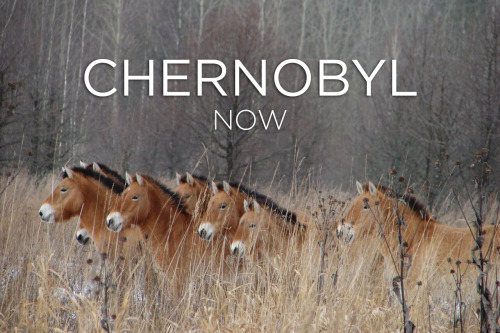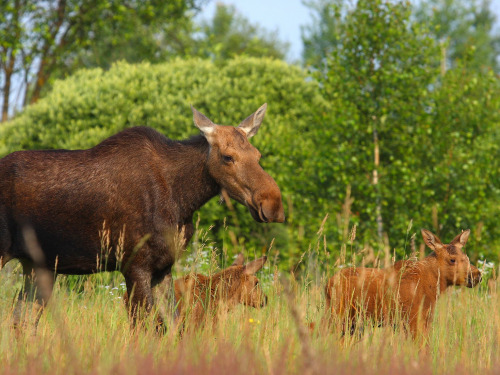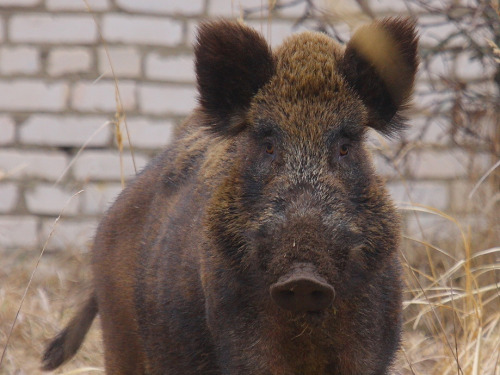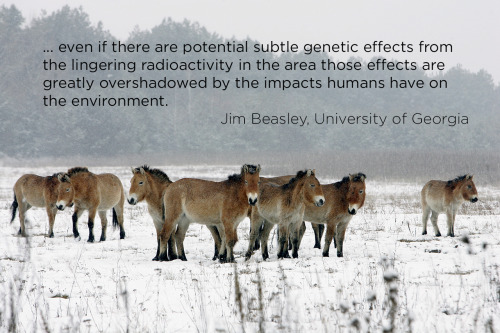As A Psychologist, Particularly One Of A Therapeutic Bent, I Never Felt Much Like A Scientist. I Mean,

As a psychologist, particularly one of a therapeutic bent, I never felt much like a scientist. I mean, we’re fluffy bunnies in the world of “proper” science, no matter how much we talk about epistemological theory or Feyerabend’s ideas or squeeze gratuitous Greek letters and geometry style diagrams into our work.
As a lingerie professional, however, I’m sometimes quite scared about how little the industry seems to know about what it means to be scientific.
More Posts from Dotmpotter and Others
Walmart heirs' net worth exceeds that of population of a city the size of Phoenix #1yrago

It’s grown 6,700% since 1983, to $144.7B in 2013 – greater than the net worth of 1,782,020 average Americans.
Read the rest
UK Chancellor: I must cut tax benefits for working poor to help them

George Osborne, born to a titled millionaire, has explained that he is cutting the tax-credits that let the working poor survive, despite the Tory party’s election promise not to do any such thing – because it will reduce the deficit and therefore save them from the cuts that the country would have to pay in the future in order to pay down those debts.
Osborne did not moot the possibility of taxing the country’s billionaires, including the “non-doms” who get to pretend that they live in an offshore tax-haven and duck their taxes. He also neglected to mention that countries are not companies, and that having a national bank and your own mint means that national debts are completely unlike the debts taken on by firms or households.
Osborne also didn’t mention the possibility of taxing the companies that pretend that their profits are made in tax-havens and that all their UK income must be remitted to an offshore firm in nonsensical trademark licenses.
Finally, Osborne didn’t mention the situation in which people working full-time jobs (or piecing together a full-time living from zero-hours contracts) can’t afford to pay for rent and food for their families and require benefits to remain solvent enough to show up for work each day, meaning that the firms paying the sub-survival wages are getting a massive tax subsidy in the form of a fed and housed workforce that comes at tax-payers’ expense.
Instead, Osborne explained that he would make the poorest workers in the UK even poorer, for their own benefit.
Read the rest
When Firms Become Persons and Persons Become Firms: outstanding lecture

UC Berkeley Political Scientist Wendy Brown came to the London School of Economics last week to discuss her book Undoing the Demos, and her lecture (MP3) is literally the best discussion of how and why human rights are being taken away from humans and given to corporations.
Brown looks at the human rights enumerated in the US Bill of Rights, and how they have been interpreted in successive Supreme Court rulings like Hobby Lobby (corporations are people whose religious freedom entitles them to deny contraception to their workers) and Citizens United (corporations are people and have the free speech right to buy politicians). She suggests that these have been misread as merely conservative/business-oriented thinking gaining influence, and that rather, they are best understood as an ongoing project that grants personhood to companies at the expense of real people.
Brown speaks for more than an hour with almost no poli-sci/econ jargon, building elegant, beautiful arguments that should be accessible to anyone. If you listen to anything this weekend, make it this.
Neoliberal rationality — ubiquitous today in statecraft and the workplace, in jurisprudence, education, and culture — remakes everything and everyone in the image of homo oeconomicus. What happens when this rationality transposes the constituent elements of democracy into an economic register? In vivid detail, Wendy Brown explains how democracy itself is imperiled. The demos disintegrates into bits of human capital; concerns with justice cede to the mandates of growth rates, credit ratings, and investment climates; liberty submits to the imperative of human capital appreciation; equality dissolves into market competition; and popular sovereignty grows incoherent. Liberal democratic practices may not survive these transformations. Radical democratic dreams may not either.
In an original and compelling theoretical argument, Brown explains how and why neoliberal reason undoes the political form and political imaginary it falsely promises to secure and reinvigorate. Through meticulous analyses of neoliberalized law, political practices, governance, and education, she charts the new common sense. Undoing the Demos makes clear that, far from being the lodestar of the twenty-first century, a future for democracy depends upon it becoming an object of struggle and rethinking.
Undoing the Demos: Neoliberalism’s Stealth Revolution [Wendy Brown/Zone Books]
When Firms Become Persons and Persons Become Firms: neoliberal jurisprudence in Burwell v. Hobby Lobby Stores [LSE]
MP3
Making Light With Electricity
According to WHO, indoor air pollution and related diseases kill more than 3 million people a year in developing nations. Much of this is due to open cooking fires, but a significant portion is caused by the of burning fuels in order to make light.
As much as we take it for granted, lots of people on this planet don’t have access to consistent electricity. Just think about that for a second. It might be more than a century old, that electric lighting in your house, but you’re very lucky to have it.
Children exposed to the smoke from burning fuels might as well be smoking 2 packs of cigarettes per day, in terms of the chemicals and smoke they’re exposed to. It’s a serious health concern. This is why I was doubly amazed by this video from Smarter Every Day (@smartereveryday).
A company called Gravitylight has invented a lamp that runs on gravity! Through an ingenious application of old science to a new problem, they’ve been able to harness a truly renewable power source to make people’s lives better.
Hey Gravitylight, here’s my message for you:


An estimated 30 trillion cells in your body—less than a third—are human. The other 70-90% are bacterial and fungal!
Learn more in the new exhibition, The Secret World Inside You, now open!
Image: Gaby D'Allesandro / © AMNH

Now that is pure adaptation!
As the days get darker and colder in much of the northern hemisphere, it’s easy to indulge in gloom. For the next few months, you’ll be shivering. You’ll be battling foul weather. Thanks to daylight saving time there will be no chance to see the sun after work.
The gloom leads to a common question: What can I do to cope with the dark and cold?
If you truly want to be happy during winter, though, this is the wrong approach to the season. Changing your mindset can do more than distracting yourself from the weather.
At first, she was asking “Why aren’t people here more depressed?” and if there were lessons that could be taken elsewhere. But once she was there, “I sort of realized that that was the wrong question to be asking,” she says. When she asked people “Why don’t you have seasonal depression?” the answer was “Why would we?”
It turns out that in northern Norway, “people view winter as something to be enjoyed, not something to be endured,” says Leibowitz, and that makes all the difference.
Lessons From The Far North
To be sure, there are some aspects of the near-polar culture that might be hard to emulate elsewhere. Small Norwegian communities are tightly knit, and strong social ties increase well-being everywhere. That said, there are lessons that can help anyone think differently about cold weather.

Did you know that 80% of all terrestrial plants and animals live in forests? That’s why the Global Goals for Sustainable Development, adopted at the United Nations in New York in September, seek to protect forests and biodiversity. Which Global Goal means the most to you? See the full list here: www.un.org/sustainabledevelopment

Bicyclean, a senior thesis project by Rachel Field ‘12, helps recycle e-waste in developing nations by preventing exposure to toxic materials. The project recently won silver at the Acer Incredible Green Contest. Read how Rachel is designing a cleaner future.







On April 26, 1986, a power surge caused an explosion at the Chernobyl Nuclear Power Plant near Pripyat, Ukraine. A large quantity of radioactive material was released.
On May 2, 1986, the Soviet government established a “Zone of Alienation” or “Exclusion Zone” around Chernobyl – a thousand square miles of “radioactive wasteland.” All humans were evacuated. The town of Pripyat was completely abandoned.
But the animals didn’t leave. And a new study, published this month in Current Biology, suggests they are doing fine. “None of our three hypotheses postulating radiation damage to large mammal populations at Chernobyl were supported by the empirical evidence,” says Jim Beasley, one of the researchers.
In fact, some of the populations have grown. These photos (mostly taken by Valeriy Yurko) come from the Belarusian side of the Exclusion Zone, and area called the Polessye State Radioecological Reserve. Kingfisher, elk, boar, baby spotted eagles, wild ponies, moose, rabbits, and wolves all make their home in the park. In some ways, human presence is worse for wildlife than a nuclear disaster.
Image credits:
1986 Chernobyl - ZUFAROV/AFP/Getty Images
Wildlife photos - Valeriy Yurko/Polessye State Radioecological Reserve
Ponies in winter - SERGEI SUPINSKY/AFP/Getty Images

Could Europe Be Powered by African Solar Energy?
For a long time, people looking for big fixes to climate change have been talking about building huge solar installations in North Africa, which gets a lot more sun than most of the places where solar power is big — Germany, for example. But now, it looks as if someone finally is doing it.
Next month in Ouarzazate, Morocco, the first portion of what eventually will be the world’s biggest concentrated solar power plant – called Noor I – is set to go online, according to the Guardian, a British newspaper.
Eventually, when the entire $10 billion complex, which is being financed with assistance from the World Bank and European Union, is completed in 2020, it will generate 580 megawatts of electricity, enough to provide a big portion of Morocco’s energy needs while still leaving plenty of juice for export. The complex could prevent 700,000 tons of carbon dioxide from being spewed into the atmosphere each year.
The plant uses an ingenious technology for getting the most out of sunlight. A huge array of 500,000 crescent-shaped mirrors focus sunlight and transmit it to a single point on a tower. (The mirrors actually have tiny computers in them, which adjust the angle throughout the day to gather the most energy.)
The plant could turn Morocco, which depends upon fossil fuel imports to fill 94 percent of its energy needs, into a major producer of electricity for export. Find out how by clicking here.
-
 the-heart-of-the-lion liked this · 9 years ago
the-heart-of-the-lion liked this · 9 years ago -
 dotmpotter reblogged this · 9 years ago
dotmpotter reblogged this · 9 years ago -
 urbanoceanix reblogged this · 9 years ago
urbanoceanix reblogged this · 9 years ago -
 hairyfoto liked this · 9 years ago
hairyfoto liked this · 9 years ago -
 mircat007 liked this · 9 years ago
mircat007 liked this · 9 years ago -
 drippingize liked this · 9 years ago
drippingize liked this · 9 years ago -
 only-lovetome liked this · 9 years ago
only-lovetome liked this · 9 years ago -
 limitedbreadsticks liked this · 9 years ago
limitedbreadsticks liked this · 9 years ago -
 snepwig liked this · 9 years ago
snepwig liked this · 9 years ago -
 saelyyia92 liked this · 9 years ago
saelyyia92 liked this · 9 years ago -
 saelyyia92 reblogged this · 9 years ago
saelyyia92 reblogged this · 9 years ago -
 aulieudu liked this · 9 years ago
aulieudu liked this · 9 years ago -
 taxidermygirl reblogged this · 9 years ago
taxidermygirl reblogged this · 9 years ago -
 thusfarsogood-blog liked this · 9 years ago
thusfarsogood-blog liked this · 9 years ago -
 lark-in-ink reblogged this · 9 years ago
lark-in-ink reblogged this · 9 years ago -
 oneofthefruits liked this · 9 years ago
oneofthefruits liked this · 9 years ago -
 princeofsparkles liked this · 9 years ago
princeofsparkles liked this · 9 years ago -
 black-sheep168 reblogged this · 9 years ago
black-sheep168 reblogged this · 9 years ago -
 aintnobodygottime4datshit reblogged this · 9 years ago
aintnobodygottime4datshit reblogged this · 9 years ago -
 msdaisysteiner reblogged this · 9 years ago
msdaisysteiner reblogged this · 9 years ago -
 erinwy liked this · 9 years ago
erinwy liked this · 9 years ago -
 the-world-i-once-loved liked this · 9 years ago
the-world-i-once-loved liked this · 9 years ago -
 sleepyheathen liked this · 9 years ago
sleepyheathen liked this · 9 years ago -
 hmmm-meggie liked this · 9 years ago
hmmm-meggie liked this · 9 years ago -
 loveisadirtywordblog liked this · 9 years ago
loveisadirtywordblog liked this · 9 years ago -
 dogon-nit liked this · 9 years ago
dogon-nit liked this · 9 years ago -
 dogon-nit reblogged this · 9 years ago
dogon-nit reblogged this · 9 years ago -
 prettygoodblogiguess reblogged this · 9 years ago
prettygoodblogiguess reblogged this · 9 years ago -
 mywrittenwordsspeak liked this · 9 years ago
mywrittenwordsspeak liked this · 9 years ago -
 itchyhandwriting liked this · 9 years ago
itchyhandwriting liked this · 9 years ago -
 lydboelger liked this · 9 years ago
lydboelger liked this · 9 years ago -
 whoree-o liked this · 9 years ago
whoree-o liked this · 9 years ago -
 waternymph55 reblogged this · 9 years ago
waternymph55 reblogged this · 9 years ago -
 waternymph55 liked this · 9 years ago
waternymph55 liked this · 9 years ago